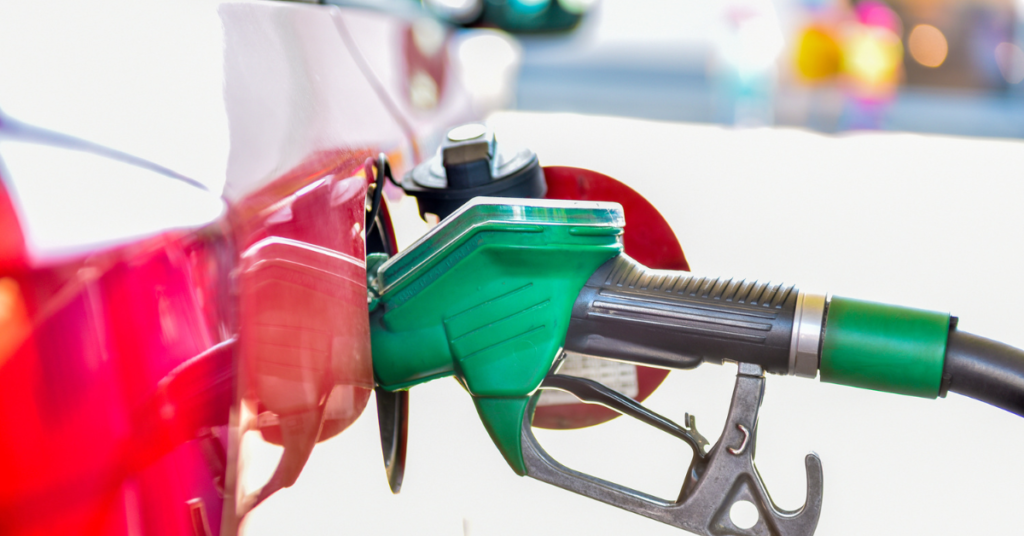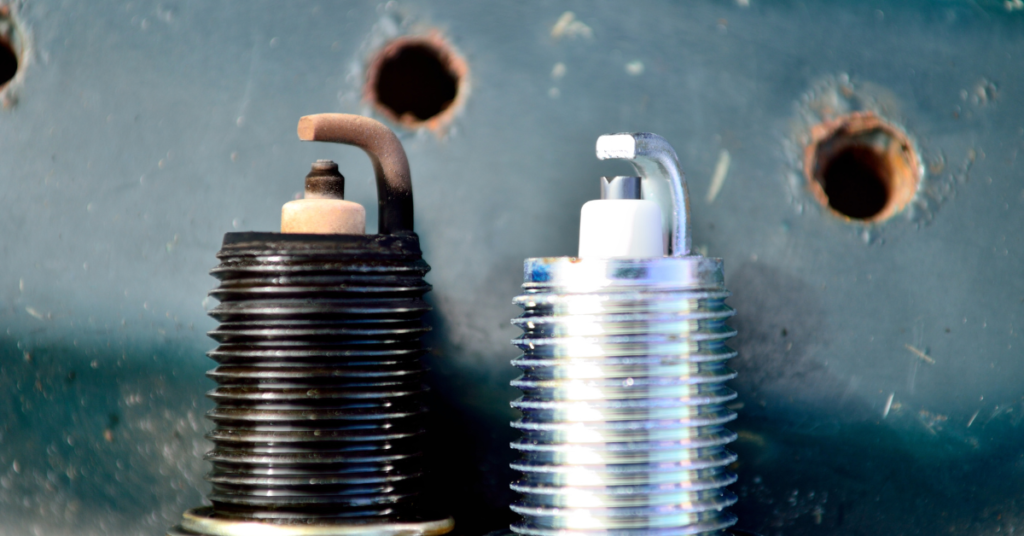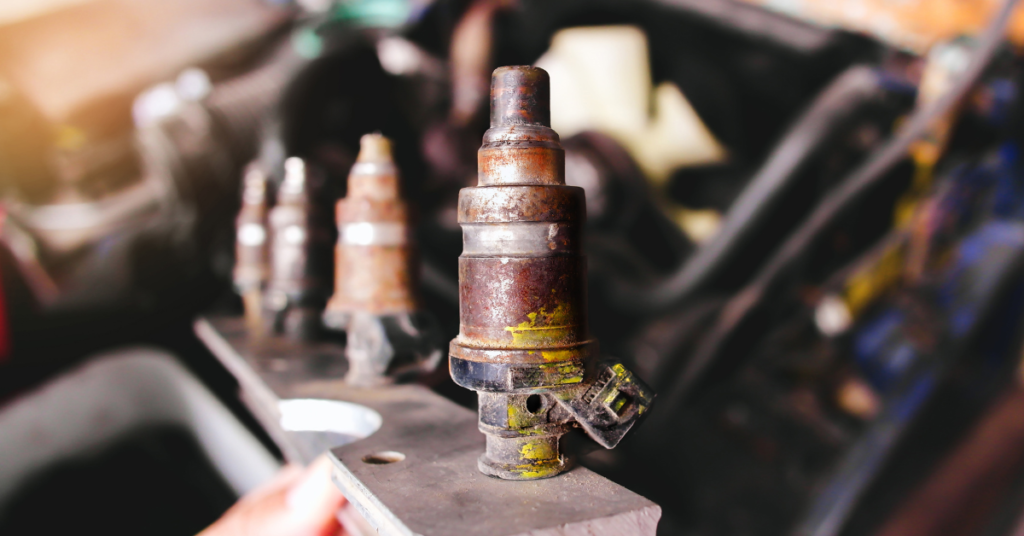
The P0304 Jeep code refers to a misfire detected in cylinder 4 of the engine. This means that the fourth cylinder is not firing properly, which can lead to a decrease in performance and fuel efficiency.
In this article, we will explore the possible causes of the P0304 code in a Jeep and discuss the steps to diagnose and fix the issue.
Contents
What Causes the P0304 Jeep Code
There are several potential causes for the P0304 code in a Jeep, including:
Ignition System Issues
Problems with the ignition system, such as a faulty spark plug or ignition coil, can cause a misfire in cylinder 4. It is important to inspect and replace any damaged components to ensure proper ignition.
A faulty spark plug in cylinder 4 can cause a weak or inconsistent spark, leading to a misfire. It is crucial to check the spark plug for worn electrodes or excessive carbon buildup.
If any signs of damage are present, replace the spark plug with a new one recommended by the manufacturer.
Similarly, a faulty ignition coil can disrupt the proper functioning of cylinder 4. Inspect the ignition coil for any cracks or other visible issues. If any damage is found, replace the ignition coil with a high-quality replacement to ensure optimal performance.
In addition to spark plugs and ignition coils, other ignition system components such as spark plug wires or the distributor cap and rotor (if applicable) should also be inspected and replaced if necessary.
Fuel Delivery Problems

Insufficient fuel delivery can also lead to a misfire in a specific cylinder. Issues like a clogged fuel injector or a malfunctioning fuel pump can disrupt the fuel flow to cylinder 4.
A clogged fuel injector can restrict the fuel flow to cylinder 4, resulting in a lean condition and misfire.
Thoroughly inspect the fuel injector for any clogs or malfunctions. If necessary, clean the fuel injector or replace it with a new one to ensure proper fuel delivery.
A malfunctioning fuel pump can also cause fuel delivery problems. If the fuel pump is not providing sufficient fuel pressure to cylinder 4, it can result in a misfire.
Test the fuel pump’s pressure using a fuel pressure gauge and replace it if it fails to meet the manufacturer’s specifications.
Additionally, check the fuel filter for any clogs or restrictions. A dirty or clogged fuel filter can impede the fuel flow and contribute to a misfire. Replace the fuel filter if necessary to ensure proper fuel delivery.
Vacuum Leaks
A vacuum leak in the intake manifold or any of the vacuum hoses can result in an imbalance in the air-fuel mixture, causing a misfire. Carefully inspect all the vacuum lines and connections for any signs of damage or leaks.
Vacuum leaks can disrupt the proper air-fuel mixture, leading to a misfire in cylinder 4. Inspect all the vacuum lines and connections for any cracks, holes, or loose fittings.
Use a smoke machine if necessary to identify any hard-to-detect leaks.
Common areas for vacuum leaks include the intake manifold gasket, throttle body gasket, and vacuum hoses. Replace any damaged gaskets or hoses to eliminate the vacuum leaks and ensure a proper air-fuel mixture.
Compression Issues: If there is a problem with the compression in cylinder 4, it can lead to a misfire. This could be caused by a worn-out piston ring, a leaking valve, or a damaged cylinder head gasket.
A compression test can help identify any compression-related problems.
Low compression in cylinder 4 can result in a misfire. Perform a compression test on cylinder 4 to measure the pressure and compare the results with the manufacturer’s specifications.
If the compression is below the recommended range, it indicates a compression issue that needs to be addressed.
Possible causes of compression problems include worn-out piston rings, a leaking valve, or a damaged cylinder head gasket. Depending on the specific issue, engine repairs or component replacements may be necessary to resolve the compression problem and eliminate the misfire.
Engine Timing
Improper engine timing, either due to a faulty timing belt or a malfunctioning camshaft position sensor, can cause misfires in specific cylinders. It is essential to check and adjust the engine timing if necessary.
Incorrect engine timing can lead to misfires, including in cylinder 4. Inspect the timing belt for any signs of wear or damage. If the timing belt is worn or damaged, replace it according to the manufacturer’s recommendations.
Additionally, check the camshaft position sensor for proper functioning. A malfunctioning camshaft position sensor can cause timing issues and result in misfires. Replace the sensor if it is faulty to ensure accurate engine timing.
Engine Control Module (ECM) Malfunction
The ECM controls various engine functions, including fuel injection and ignition timing. A malfunctioning ECM can lead to misfire issues. It is advisable to scan the ECM for any error codes and perform a thorough diagnosis.
If all other potential causes have been ruled out, a malfunctioning ECM may be the culprit behind the misfire in cylinder 4. Use an OBD-II scanner to retrieve the error codes stored in the ECM.
If any ECM-related error codes are present, further diagnostics or repairs may be required.
Diagnosing the P0304 Code in a Jeep
To diagnose the P0304 code in a Jeep, follow these steps:
Scan the Error Codes
Use an OBD-II scanner to retrieve the error codes stored in the ECM. The P0304 code indicates a misfire in cylinder 4.
- Connect an OBD-II scanner to the vehicle’s diagnostic port, usually located under the dashboard. Follow the scanner’s instructions to retrieve the error codes from the ECM.
- Look for the specific error code P0304, which indicates a misfire in cylinder 4. Take note of any other error codes that may be present, as they can provide additional information about the issue.
Inspect Spark Plugs and Ignition Coils

Remove the spark plug from cylinder 4 and inspect it for any signs of damage, such as worn electrodes or excessive carbon buildup. Additionally, check the ignition coil for any cracks or other visible issues.
- Locate the spark plug for cylinder 4, which is typically found on the corresponding cylinder’s side of the engine. Remove the spark plug using a spark plug socket and inspect it closely.
- Check the spark plug’s electrodes for wear or damage. If the electrodes are worn down or the spark plug’s ceramic insulator is cracked, it is recommended to replace the spark plug.
- Inspect the ignition coil for any cracks, corrosion, or other visible issues. A faulty ignition coil can cause a misfire in cylinder 4 and should be replaced if any damage is found.
Check Fuel Injectors
Inspect the fuel injector for cylinder 4 to ensure it is clean and functioning correctly. Any clogs or malfunctions should be addressed promptly.
- Locate the fuel injector for cylinder 4, which is usually found near the corresponding cylinder’s intake manifold port. Inspect the fuel injector for any visible signs of dirt, debris, or clogs.
- Clean the fuel injector using an appropriate cleaner or replace it if necessary. A clogged or malfunctioning fuel injector can disrupt the fuel flow to cylinder 4 and cause a misfire.
Test Compression
Perform a compression test on cylinder 4 to measure the pressure and identify any compression-related issues. Compare the results with the manufacturer’s specifications.
- Connect a compression tester to cylinder 4’s spark plug hole. Follow the instructions provided by the compression tester to perform the test.
- Crank the engine several times and record the compression pressure for cylinder 4. Compare the obtained pressure with the manufacturer’s specifications. If the compression is below the recommended range, further inspection or repairs may be required.
Inspect Vacuum Lines
Carefully examine all the vacuum lines and connections for any leaks or damage. Use a smoke machine if necessary to identify any hard-to-detect leaks.
- Inspect all the vacuum lines connected to the intake manifold, throttle body, and other relevant engine components. Look for any visible signs of cracks, holes, or loose fittings.
- If there are no visible signs of vacuum leaks, but a leak is suspected, use a smoke machine to detect any hard-to-detect leaks. Connect the smoke machine to the intake manifold and observe for any smoke escaping from the vacuum lines or connections.
Check Engine Timing
Verify that the engine timing is set correctly. Inspect the timing belt for any signs of wear or damage, and ensure the camshaft position sensor is functioning properly.
- Inspect the timing belt for any signs of wear, cracks, or damage. If the timing belt is worn or damaged, it should be replaced according to the manufacturer’s recommendations.
- Check the functioning of the camshaft position sensor. A malfunctioning sensor can cause timing issues and result in misfires. Replace the sensor if it is found to be faulty.
Solving the P0304 Code in a Jeep
Once the cause of the P0304 code has been identified, take the appropriate steps to fix the issue:
Replace Faulty Spark Plug
If the spark plug in cylinder 4 is damaged or worn out, replace it with a new one. Make sure to use the correct spark plug recommended by the manufacturer.
Remove the damaged or worn spark plug from cylinder 4 using a spark plug socket.
Install a new spark plug recommended by the manufacturer, ensuring it is tightened to the specified torque.
Repair or Replace Faulty Ignition Coil
If the ignition coil is found to be faulty, replace it with a new one. It is essential to use a high-quality coil to ensure optimal performance.
Remove the faulty ignition coil from its mounting location.
Install a new ignition coil, ensuring it is securely fastened and connected to the spark plug and electrical connector.
Clean or Replace Fuel Injector

If the fuel injector is clogged or malfunctioning, clean it thoroughly or replace it if necessary. A clean fuel injector will ensure proper fuel delivery to cylinder 4.
Clean the fuel injector using an appropriate injector cleaner according to the product instructions. Ensure all debris or clogs are removed.
If the fuel injector is severely clogged or damaged, it may need to be replaced. Install a new fuel injector following the manufacturer’s recommendations.
Address Vacuum Leaks
If any vacuum leaks are detected, repair or replace the affected components. Ensure all connections are secure and sealed properly to prevent future leaks.
Repair any cracks, holes, or loose fittings in the vacuum lines or connections. Use appropriate sealants or replacement parts to ensure a proper seal.
Verify that all vacuum lines are securely connected to their respective ports and fittings.
Resolve Compression Issues
If the compression test reveals low pressure in cylinder 4, address the underlying causes, such as worn piston rings or damaged valves. This may require extensive engine repairs or component replacements.
Determine the specific cause of the low compression, such as worn piston rings, a leaking valve, or a damaged cylinder head gasket.
Depending on the identified issue, perform the necessary repairs or component replacements to restore proper compression in cylinder 4.
Adjust Engine Timing
If the engine timing is off, adjust it according to the manufacturer’s specifications. Replace the timing belt if it shows signs of wear or damage, and ensure the camshaft position sensor is functioning correctly.
Refer to the vehicle’s manual for the specific engine timing adjustment procedures. Follow the instructions carefully to ensure accurate timing.
If the timing belt is worn or damaged, replace it according to the manufacturer’s recommendations. Ensure the new timing belt is properly tensioned.
Address ECM Malfunction
If the ECM is found to be faulty, it may need to be repaired or replaced. Consult a professional mechanic or dealership for assistance with ECM-related issues.
If all other potential causes have been ruled out and the ECM is suspected to be malfunctioning, it is advisable to seek professional assistance.
Consult with a qualified mechanic or contact the dealership to diagnose and address any ECM-related issues.
The P0304 misfire code in your Jeep may raise concerns, yet delving into the fact that misfires affect a variety of vehicles underscores the need for a comprehensive perspective.
Remember, it is always recommended to consult with a qualified mechanic or technician for a comprehensive diagnosis and repair of the P0304 code in your Jeep.
They have the expertise and specialized tools to accurately identify and fix the issue, ensuring the optimal performance of your vehicle.
FAQ
Q: What does the P0304 code in a Jeep indicate?
The P0304 code indicates a misfire detected in cylinder 4 of the engine.
Q: What are some potential causes of the P0304 code in a Jeep?
Some potential causes include ignition system issues, fuel delivery problems, vacuum leaks, compression issues, engine timing problems, and ECM malfunction.
Q: How can I diagnose the P0304 code in my Jeep?
To diagnose the P0304 code, you can scan the error codes using an OBD-II scanner, inspect spark plugs and ignition coils, check fuel injectors, test compression, inspect vacuum lines, and check engine timing.
Q: How can I fix the P0304 code in my Jeep?
To fix the P0304 code, you may need to replace faulty spark plugs, repair or replace faulty ignition coils, clean or replace fuel injectors, address vacuum leaks, resolve compression issues, adjust engine timing, or address ECM malfunctions.
It is recommended to consult with a qualified mechanic for assistance.



